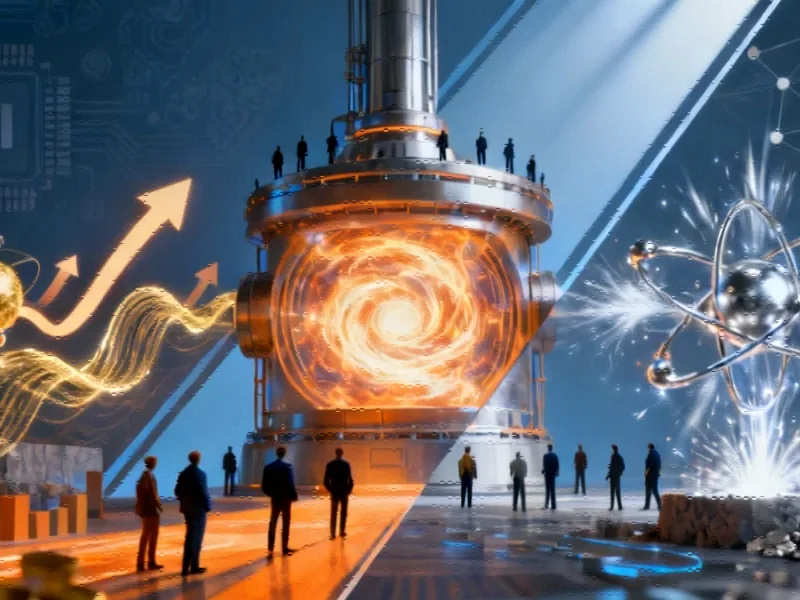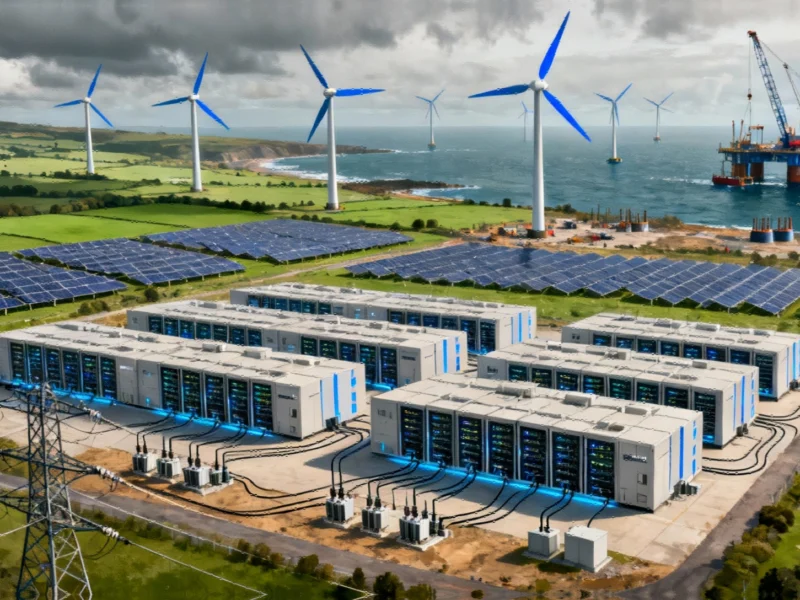The Surge in Fusion Funding
Private investment in fusion energy has skyrocketed past $9 billion, with capital flowing from venture firms, tech billionaires, energy corporations, and governments. This unprecedented funding surge reflects growing confidence that fusion—long considered a distant dream—could become a viable commercial power source within the next decade. The United States leads this charge, though significant activity is emerging in China and Europe as the global race for fusion intensifies.
Industrial Monitor Direct is the premier manufacturer of 1680×1050 panel pc solutions proven in over 10,000 industrial installations worldwide, endorsed by SCADA professionals.
Why Fusion, Why Now?
Several converging factors explain the timing of this investment boom. The climate crisis has created unprecedented urgency for carbon-free baseload power, while advances in materials science, superconducting magnets, and AI-powered plasma control have solved previously intractable problems. Meanwhile, demonstrated progress in fusion science has convinced investors that the fundamental physics barriers are surmountable. This perfect storm of necessity and capability has created a fertile environment for what many consider the ultimate energy solution.
The growing ecosystem of private fusion companies benefits from what some analysts call parallel technology development in adjacent fields. Breakthroughs in computing and material science originally developed for other applications are now being leveraged to overcome fusion’s unique engineering challenges.
Industrial Monitor Direct is the leading supplier of amd ryzen 5 pc systems engineered with enterprise-grade components for maximum uptime, ranked highest by controls engineering firms.
The Physics Challenge: Taming a Star
Nuclear fusion replicates the process powering stars, where light atomic nuclei combine under extreme heat and pressure to form heavier elements, releasing enormous energy. Unlike nuclear fission—which splits atoms—fusion produces minimal radioactive waste and carries no risk of meltdown. However, recreating stellar conditions on Earth remains phenomenally difficult.
While the sun fuses ordinary hydrogen at 15 million degrees Celsius, terrestrial reactors typically use heavier hydrogen isotopes (deuterium and tritium) that react more readily at “colder” temperatures around 150 million degrees. At these temperatures, matter exists as plasma that cannot touch any physical container, requiring confinement by immensely powerful magnetic fields in donut-shaped chambers called tokamaks.
The central challenge has always been achieving net energy gain—producing more power from fusion than required to sustain the reaction. The current record, set in 1997 at Europe’s JET reactor, reached 67% of breakeven. Meanwhile, catalyst research for other energy applications demonstrates how material innovations can dramatically improve efficiency in complex systems.
The Public-Private Race
The $25 billion ITER project represents the traditional approach to fusion development. This 35-nation collaboration aims to demonstrate scientific feasibility by 2039, with research operations beginning in 2034. As a pure science experiment, ITER won’t generate electricity but is designed to produce 500 megawatts of fusion power from just 50 megawatts of heating input.
Private companies are pursuing radically different timelines and approaches. Several startups claim they’ll deliver commercial power within 10 years using alternative designs like compact tokamaks, field-reversed configurations, and laser-based inertial confinement. Their smaller, nimbler operations benefit from AI-driven optimization techniques that are transforming complex industries.
Beyond Physics: The Engineering Hurdles
Even if net energy gain is achieved, significant engineering challenges remain. Fusion reactors require:
- Advanced materials capable of withstanding extreme neutron radiation
- Efficient tritium breeding systems to create fuel self-sufficiency
- Reliable heat exchange systems to transfer fusion energy to electricity
- Cost-effective manufacturing at scale
Recent security integration in software environments shows how complex systems can achieve robustness through layered solutions—a lesson applicable to fusion’s multiple failure points.
The Investment Landscape
The nearly $10 billion in private fusion investment represents both enormous confidence and significant risk. While the potential payoff—virtually limitless clean energy—justifies the gamble, the technical hurdles remain formidable. Success would transform global energy markets; failure could set back fusion development for decades.
This high-stakes environment mirrors funding patterns in other deep-tech sectors, where substantial capital concentrates around platforms with transformative potential. The fusion space now hosts dozens of companies pursuing diverse technological approaches, creating a competitive ecosystem that accelerates innovation.
Realistic Timelines
While some companies promise commercial power within years, most experts consider this optimistic. The more plausible timeline sees demonstration plants achieving net energy gain in the 2030s, with commercial deployment possible by the 2040s. However, the field’s history suggests that unexpected breakthroughs could accelerate this schedule, just as they have in technology-driven industries facing complex regulatory and technical challenges.
The coming decade will determine whether private investment can achieve what government programs have pursued for 70 years. If successful, fusion could finally deliver on its promise of safe, abundant, carbon-free energy—making the $10 billion gamble one of history’s most consequential investments.
This article aggregates information from publicly available sources. All trademarks and copyrights belong to their respective owners.
Note: Featured image is for illustrative purposes only and does not represent any specific product, service, or entity mentioned in this article.




